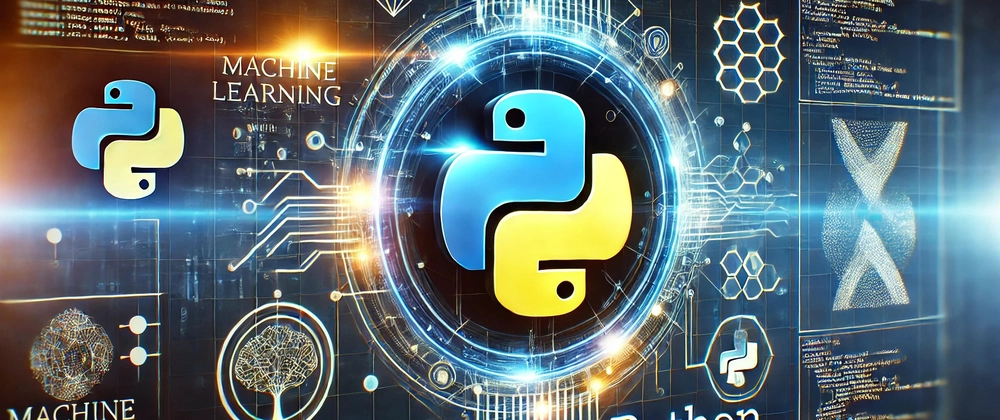Understanding the Basics of Machine Learning with Python
Machine Learning (ML) is one of the most transformative technologies of the 21st century. From recommendation systems on Netflix to self-driving cars, ML is powering innovations across industries. If you're a web developer or programmer looking to expand your skill set, understanding the basics of machine learning with Python is a great way to stay ahead of the curve. Not only will it open up new career opportunities, but it can also help you create smarter, data-driven applications. And if you're looking to monetize your web programming skills, platforms like MillionFormula can help you turn your expertise into income.
In this article, we’ll explore the fundamentals of machine learning, how Python fits into the picture, and provide practical code snippets to get you started.
What is Machine Learning?
Machine Learning is a subset of artificial intelligence (AI) that focuses on building systems that can learn from data and improve their performance over time without being explicitly programmed. Instead of writing rules for a program to follow, you feed data into an algorithm, and it learns patterns to make predictions or decisions.
There are three main types of machine learning:
- Supervised Learning: The algorithm learns from labeled data, where the input and output are known. Examples include predicting house prices or classifying emails as spam or not spam.
- Unsupervised Learning: The algorithm learns from unlabeled data, finding hidden patterns or structures. Examples include clustering customers based on purchasing behavior.
- Reinforcement Learning: The algorithm learns by interacting with an environment and receiving rewards or penalties. Examples include training robots or game-playing AI.
Why Python for Machine Learning?
Python is the go-to language for machine learning, and for good reasons:
- Ease of Use: Python’s simple syntax makes it beginner-friendly.
- Rich Ecosystem: Libraries like NumPy, pandas, scikit-learn, TensorFlow, and PyTorch provide powerful tools for data manipulation, analysis, and model building.
- Community Support: Python has a large and active community, making it easy to find tutorials, documentation, and help.
Getting Started with Machine Learning in Python
To get started, you’ll need to install a few libraries. You can do this using pip:
bash
Copy
pip install numpy pandas scikit-learn matplotlib
Step 1: Import Libraries
Start by importing the necessary libraries:
python
Copy
import numpy as np import pandas as pd from sklearn.model_selection import train_test_split from sklearn.linear_model import LinearRegression import matplotlib.pyplot as plt
Step 2: Load and Explore Data
Machine learning relies heavily on data. For this example, let’s use a simple dataset to predict house prices based on square footage.
python
Copy
# Sample data: Square footage vs. Price data = { 'SquareFootage': [1400, 1600, 1700, 1875, 1100, 1550, 2350, 2450, 1425, 1700], 'Price': [245000, 312000, 279000, 308000, 199000, 219000, 405000, 324000, 319000, 255000] } # Convert to DataFrame df = pd.DataFrame(data) # Display the first few rows print(df.head())
Step 3: Prepare the Data
Before training a model, you need to split the data into features (input) and labels (output), and then into training and testing sets.
python
Copy
# Features (X) and Labels (y) X = df[['SquareFootage']] y = df['Price'] # Split the data (80% training, 20% testing) X_train, X_test, y_train, y_test = train_test_split(X, y, test_size=0.2, random_state=42)
Step 4: Train a Model
For this example, we’ll use a simple linear regression model.
python
Copy
# Create and train the model model = LinearRegression() model.fit(X_train, y_train)
Step 5: Make Predictions
Once the model is trained, you can use it to make predictions on new data.
python
Copy
# Predict on the test set y_pred = model.predict(X_test) # Display predictions print(y_pred)
Step 6: Evaluate the Model
To assess the model’s performance, you can use metrics like Mean Absolute Error (MAE) or R-squared.
python
Copy
from sklearn.metrics import mean_absolute_error, r2_score # Calculate MAE and R-squared mae = mean_absolute_error(y_test, y_pred) r2 = r2_score(y_test, y_pred) print(f"Mean Absolute Error: {mae}") print(f"R-squared: {r2}")
Step 7: Visualize the Results
Visualization helps you understand the model’s performance better.
python
Copy
# Plot the regression line plt.scatter(X_test, y_test, color='blue', label='Actual Prices') plt.plot(X_test, y_pred, color='red', label='Predicted Prices') plt.xlabel('Square Footage') plt.ylabel('Price') plt.title('House Price Prediction') plt.legend() plt.show()
Why Learn Machine Learning as a Web Developer?
As a web developer, integrating machine learning into your projects can give you a competitive edge. For example:
- Personalization: Use ML to recommend products or content to users.
- Automation: Automate tasks like customer support with chatbots.
- Analytics: Analyze user behavior to improve your website’s performance.
By combining your web development skills with machine learning, you can create smarter, more dynamic applications that stand out in the market.
Monetizing Your Skills
If you’re looking to make money with your web programming skills, platforms like MillionFormula can help you turn your expertise into income. Whether you’re freelancing, building SaaS products, or offering consulting services, there are countless opportunities to monetize your skills.
Conclusion
Machine learning is a powerful tool that can enhance your web development projects and open up new career opportunities. Python’s simplicity and robust ecosystem make it the perfect language to get started with ML. By understanding the basics and practicing with real-world datasets, you’ll be well on your way to mastering this transformative technology.
So, what are you waiting for? Dive into the world of machine learning with Python today and take your programming skills to the next level! And if you’re ready to start monetizing your skills, don’t forget to check out MillionFormula for opportunities to turn your expertise into income.
Happy coding! 🚀



Top comments (0)